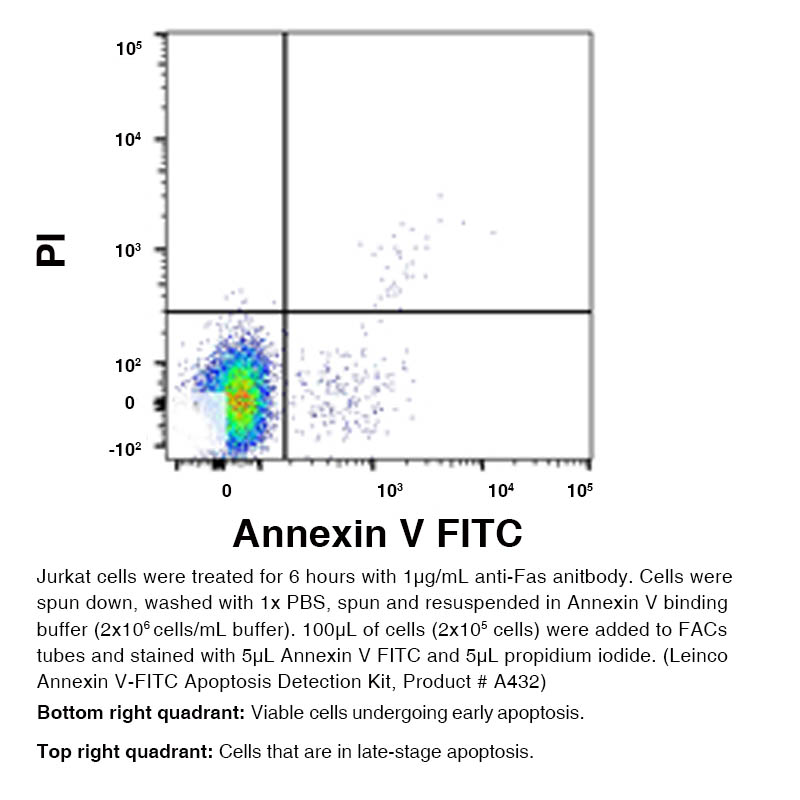Annexin V - FITC Apoptosis Detection Kit
Product Code:
LEI-A432
LEI-A432
Regulatory Status:
RUO
RUO
No additional charges, what you see is what you pay! *
| Code | Size | Price |
|---|
| LEI-A432-25tests | 25 tests | £149.00 |
Quantity:
| LEI-A432-100tests | 100 tests | £242.00 |
Quantity:
| LEI-A432-300tests | 300 tests | £396.00 |
Quantity:
Prices exclude any Taxes / VAT



